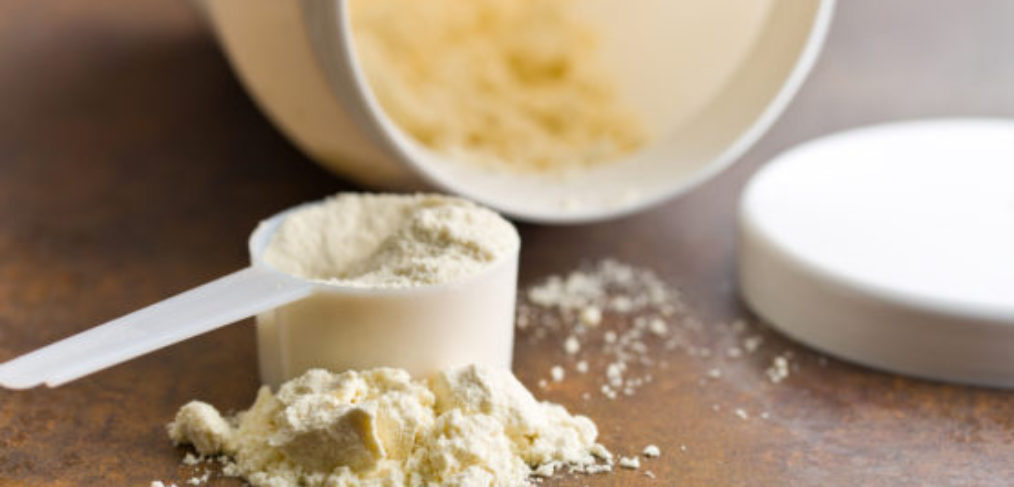Recovering Faster from Training. With Food. Not Powders.

Energy Bars. Protein Shakes. Freshly squeezed juices from the cafe at the gym. How many other workout recovery foods and drinks can you think of?
My introduction into this category of sports nutrition dates back more than two decades.
Think early 90’s, circuit training on selectorized fitness center machines and more sessions on the stair master than anyone needs to do… ever. I first tasted a Power Bar in 1993. They were being sold at the Gold’s Gym I was a member of and I vividly recall how decadent it felt to eat half (yes, only a half) of one of the two choices of their 230 calorie, stickier than chewing gum yet somehow delicious Chocolate or Malt Nut flavor which was their sole offering at the time.
High in protein, low in (what we thought at the time was bad-for-us) fat, with just the ‘right amount of carbs’ to recover with, it seemed to cover all the bases that an athlete (or regular gym goer) could possibly want at the time.
Fast forward to today, and the sports nutrition category is one which is just a tad more vast and lucrative, to say the least; the sports nutrition category is collectively worth an excess of $16 billion.
Sports protein powders make up 70% of that, and the remainder is divided between $2.5 billion for energy and nutrition bars, $6.9 billion in the sports drink category (1).
And while we’ve certainly seen tremendous advances in sport and technology, how much of this impressive human performance is connected to the increased consumption of creatine monohydrate, whey protein isolate and powdered branched chain amino acids, the three best sellers of all in the sports nutrition category (2)?
Further, what was an athlete or regular exerciser to do if he or she happened to be training and competing prior to the introduction and subsequent explosion of ‘sports nutrition’? Or, going back a few more generations, simply doing physical labor just to survive on a daily basis?
It’s fair to say they weren’t racing home and making concoctions in their blenders using an array of powders and potions, often far too high in sugar and refined food by-products, let alone stopping at the juice cafe at their gym for a customized, $18 smoothie.
So why should our current model be any different today?
It doesn’t have to be; we are actually far better served if we shift away from our reliance on the convenience of a protein in a powdered form and packaged, processed sports nutrition products as a whole and move toward a whole food based approach, not only for exercise, training and performance in racing, but in day to day living.
That, coupled with a move away from also relying too heavily on carbohydrate as our fuel and training our body to use fat in its proxy are two key components of not only creating a model which will allow our bodies to recovery more quickly from training, but to decrease the chances of developing inflammation in our guts, which is the root cause of most illnesses we see today.
The best recovery drink of all is not one which in which we carefully measure out 4 grams of processed carbohydrate for every 1 gram of processed protein, then blend into a smoothie and force ourselves to consumer within that precious 15 minute window after doing even the shortest of cardio sessions, not to mention after an ironman training effort.
Consider, instead, a model in which a person is training in a fasted state, using fat as his or her primary fuel source. There’s no risk of gastric upset as there’s nothing in the stomach to cause any potential problem. The body will learn to tap into its own body fat as its fuel, to make the ketone bodies it needs as well as the small amount of glucose being demanded by the brain. Once the workout is over, since the body wasn’t using carbohydrates in the first place, there’s no urgency to hurry up and get those carbs back into the body.
However, this is not to suggest that one needs to do nothing to allow their body to recover from a strenuous effort. Consuming a clean, pure, fresh source of some type of liquid, in order to facility more rapid absorption into what will by default be at least a moderately dehydrated body, which is a rich source of collagen, amino acids and protein would be ideal.
Something like… bone broth!
Bone Broth can serve a very useful purpose in the diet of an athlete. After a workout, you need to replace electrolytes, hydrate, and provide your body with a source of protein. The collagen and glycine may help soft tissues recover, and its consumption will be supporting your digestive and overall immune health (3).
Far more palatable than a powdered based shake, bone broth can be consumed hot or cold, and jazzed up to your heart’s content.
On a hot, summer’s day, there’s nothing better after a long, sweaty run than an ice blended bone broth, a squeeze of lime and freshly shaved ginger, served in a salt-rimmed glass (go ahead, throw in an umbrella!).
Or after a morning swim in the cold, dark winter mornings, how perfect does a steaming hot cup of broth with chili flakes, turmeric for its natural anti inflammatory properties and freshly ground pepper?
Food is medicine; we find everything we need from nature and what we don’t consume in its most pure state, we benefit most from if the fewest steps are taken in the process of going from growing, running or swimming in its original state to when and how it lands on our plates.
Does this mean there’s never room for ‘sports nutrition’ products?
Not by a long shot.
Just keep real, whole food as the mainstay of what you’re eating, whether your performing as an athlete, an executive or a busy parent, and your gut as well as overall well-being will be best served.
- https://www.foodnavigator-usa.com/Article/2015/09/17/Protein-powders-The-heavyweight-in-the-16bn-sports-nutrition-market
- http://supplementfactoryuk.com/top-10-most-popular-sports-nutrition/
- Dr. Kevin Sprouse, MD, Cannondale Drapac Pro Cycling Team, Podium Sports Medicine,Knoxville, TN.





